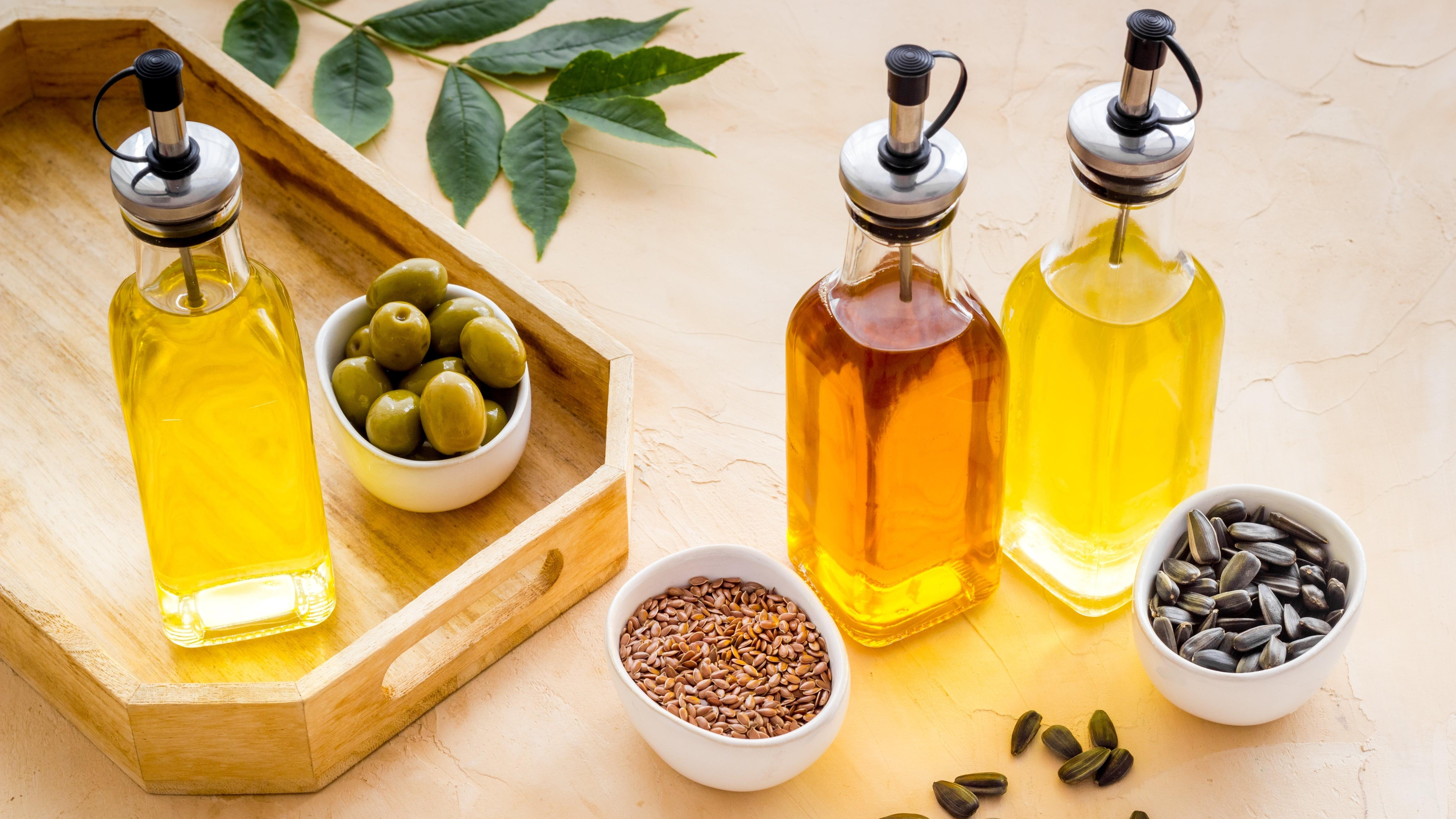Not All Cooking Oils Are Created Equal
When you oil up that skillet, what should you reach for?
We may receive a commission on purchases made from links.
Vegetable oil, canola oil, safflower oil, avocado oil, coconut oil—the list of everyday pantry oils goes on and on. But which one do I put in my pan? Do different oils affect the flavor of my final product? Does swapping out one oil for another even matter? In some cases, yes. Here's how some of the most common cooking oils differ from each other, and how to use them.
Vegetable oil
Vegetable oil is the broadest term that applies to a number of cooking oils, explains MasterClass, and refers to any processed oil that comes from a plant and remains liquid at room temperature. That liquid form is what sets vegetable oils apart from something like shortening, which is fat that remains solid.
A product labeled as vegetable oil can come entirely from one plant, like a soybean, or it can be a blend of multiple plants such as corn, safflower, and sunflower. And because they are both plant-derived, even coconut and avocado oils would also fall under the category of vegetable oils, even though they're both fruits.
Since vegetable oil is neutral in flavor, it won't affect the taste of the food you're cooking in it, which pretty much makes it an all-purpose cooking oil that can be used for frying, grilling, and sauteing.
Canola oil
Canola oil is a type of vegetable oil. This oil comes from the seeds of the canola plant and is actually a result of plant crossbreeding with the rapeseed plant. Although canola oil is safe to consume, it is also used in biodiesel, an alternative to diesel fuel, and can be found in some everyday items that typically involve petroleum, such as tires.
Canola oil and vegetable oil can be used interchangeably in most recipes since they are light on flavor and have a comparable smoke point. But if you want the ingredient with lower fat content, canola oil would be the best choice.
Corn oil
While the obvious difference between corn oil and other vegetable oils is that it comes from corn, there's a little more to it than that. As with vegetable oils more broadly, corn oil is mostly neutral in flavor, making it suitable for a number of different cooking applications. However, some argue that corn oil actually carries a very light buttery flavor similar to that of cornbread. (Nigella disagrees.)
The biggest selling point for corn oil over other vegetable oils is its smoke point. The smoking temperature of corn oil is around 450 degrees Fahrenheit, which makes it ideal for high-heat cooking methods like deep frying.
Other seed oils
Sunflower, safflower, avocado, and coconut oil might have some effect on the flavor of whatever you're cooking.
For example, avocado oil has a very high smoke point of 520 degrees Fahrenheit, a great attribute for something like wok cooking. Sunflower seed oil has a smoke point around 450 degrees Fahrenheit; be aware that it has a nutty flavor to it that can be detectable in the final dish. On the other end of the spectrum, coconut oil has a very low smoke point (about 320 degrees Fahrenheit), which makes it only useful for certain dishes, like a stir fry. It might leave trace flavors of coconut behind, too, but that depends on the ingredients you're cooking with.
Safflower oil is fairly similar to canola and other vegetable oils in that its smoke point is around 450 degrees Fahrenheit, but what sets this oil apart from those others is that it actually makes a pretty good moisturizer, so it's often found in skin products. Same goes for coconut and avocado oils, too; consumers like that these ingredients are more natural than the chemicals on the label they can't pronounce.
So, while many of these oils are closely related, their usefulness can vary depending on the recipe. If you're not using any advanced cooking techniques, however, they're fairly interchangeable and you should buy whichever oil you like working with the best.
